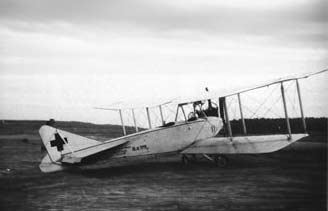Explore the legacy of the Albatros B.II, a groundbreaking aircraft from 1914, renowned for its reconnaissance role in WWI, including its design, performance, and military significance.
The Albatros B.II, introduced in 1914, was a critical reconnaissance asset during the early stages of WWI. Its distinct design, commendable performance, and military contribution left an indelible mark on aviation history. The Albatros B.II, with its characteristic design, represented a significant step in reconnaissance aviation during the early days of World War I. As the world plunged into the chaos of global warfare, the need for reliable aerial reconnaissance became paramount, a gap the Albatros B.II aimed to fill.
History of the Development of the Albatros B.II
As the 20th century dawned, rapid advancements in aviation technology ran parallel to escalating geopolitical tensions. The onset of WWI in 1914 highlighted the strategic importance of airborne reconnaissance. With armies clashing on sprawling fronts, an eye in the sky was crucial.
Responding to this, the Albatros Flugzeugwerke company in Germany commenced the development of a two-seat reconnaissance aircraft. Their project bore fruit with the Albatros B.II taking to the skies for the first time in 1914.
While the aircraft was primarily designed for reconnaissance, it quickly found itself employed in diverse roles due to the dynamic needs of the war. Regarding NATO nicknames, it’s worth noting that NATO was established in 1949, decades after the Albatros B.II’s introduction, so the aircraft did not receive a NATO designation.
Design of the Albatros B.II
A two-seater biplane, the Albatros B.II featured a wingspan of 13.6 meters (44.6 feet) and a length of 8.8 meters (28.8 feet). The aircraft was powered by a Mercedes D.III six-cylinder water-cooled inline engine.
One of its striking design features was the “Farman-style” configuration, where the pilot and observer were positioned in tandem, with the pilot in the rear. This setup, while unconventional, provided the observer with an unobstructed view, essential for reconnaissance.
However, this design posed challenges. Communication between the pilot and observer was hampered due to their placement. Additionally, the pilot’s rearward positioning reduced his forward visibility, a critical limitation in potential combat scenarios.

Performance of the Albatros B.II
Driven by its robust Mercedes engine, the Albatros B.II could reach speeds of approximately 100 km/h (62 mph). It operated best at altitudes up to 3,000 meters (9,840 feet) and boasted a range close to 440 kilometers (273 miles).
In comparison to other aircraft of its time, such as the French Voisin III, the Albatros B.II offered competitive performance. Its strengths lay in its reliability and relatively simple construction, making it a valuable asset for reconnaissance missions.
Military Use and Combat of the Albatros B.II
The primary role of the Albatros B.II was reconnaissance. However, as the war evolved and aerial combat became more prevalent, it was also used for training purposes due to its non-aggressive stance (it was unarmed in its initial versions).
Its use in frontline reconnaissance diminished with the introduction of more adv
anced, armed aircraft. Yet, its contributions in the early stages of the war, providing critical intelligence to German forces, were invaluable.
By the war’s end, the Albatros B.II had been largely phased out from frontline service. Its legacy, however, as one of the pioneering reconnaissance aircraft of WWI, remained intact.
The Albatros B.II encapsulated the rapid evolution of aviation during the tumultuous years of WWI. As a reconnaissance asset, it demonstrated the growing importance of aerial intelligence in modern warfare. While it was eventually overshadowed by more advanced designs, its role in shaping the early air campaigns of WWI ensures its place in aviation history.
Back to the Warbirds section.